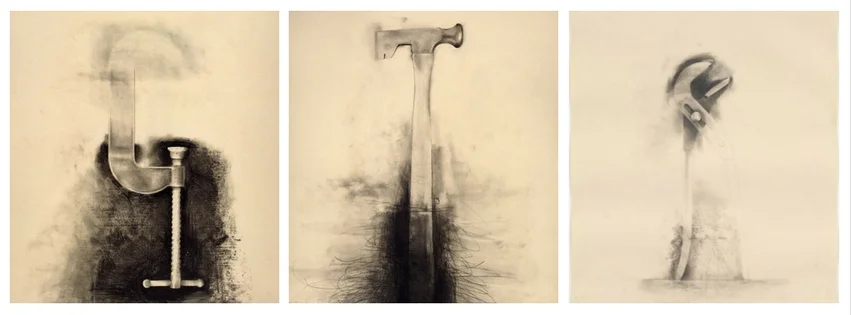My grandfather owned a hardware store when I was growing up. Though I was no stranger to tools, it took Jim Dine’s drawings to open my aesthetic eye to hand tools. It happened after I graduated from college and moved to Boston. Dine’s tool drawings* were on exhibit at the Museum of Fine Arts. I recollect they were taller than I, raw and poetic. The veil between myself and the ordinary beauty of things was lifted.
Jim Dine, Tool Drawings.
Decades later, I receive an Amish hay fork for my birthday. Need I say they are beautiful? In a tool beauty isn’t all that matters, though, so I took one out to the field with my scythe. It was in December so cutting old grass that’s been nested upon and walked through by deer and elk was laughable. Nevertheless, I cut enough to try out the fork. Miracle. The forks themselves are so light, certainly not weighing even a pound. They are cunningly made from one piece of wood, steamed, bent, split, and shaped, with three small dowels added as spacers. But that is not all. They work, they perfectly lift and balance long grass. Happily, mowing season will be here in a twinkle.
* In looking for a suitable link to Jim Dine’s drawings, I discovered his grandfather also owned a hardware store—his in Cincinnati, OH, mine in Stow, OH.
Amish hay forks. Photo by Joan Anderson.


